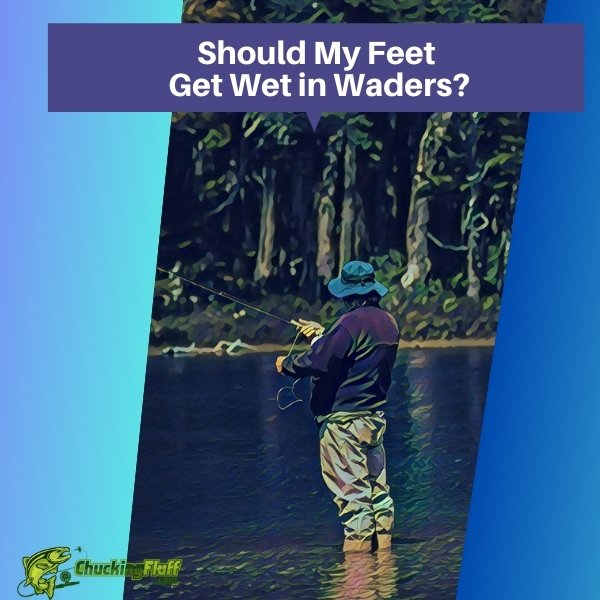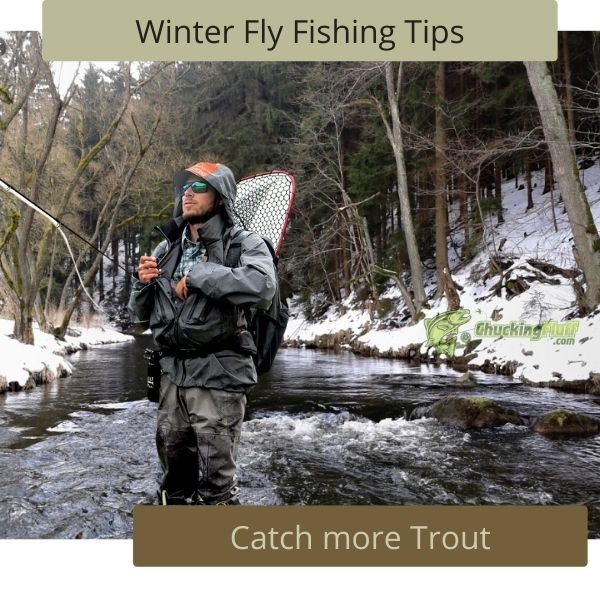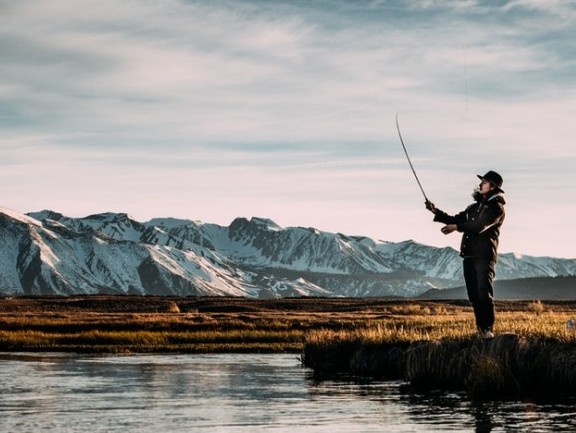| Disclosure: Just to be open and honest the buttons and links you click on in the website will in most cases take you to another website where you can purchase the products I am reviewing. As an Amazon Associate I earn from qualifying purchases. |
Should My Feet Get Wet in Waders? Tips for Staying Dry

Fly fishing apparel are specifically designed for the sport – to suit different weather condition, offer utmost functionality when worn, and give optimum comfort.
But, you need to be well informed when selecting any to get the best out of your purchase.
Waders are the most typical gear among anglers and we’ve heard and read complaints of fishermen/women’s feet getting wet.
You might also be wondering, should my feet get wet in waders?
All matters constant, your feet shouldn’t get wet in waders.
Waders are designed with booties attached to them in the feet area and seams are well sealed to lock out any water.
Wader booties shouldn’t let in any moisture if they are in perfect condition.
Should My Feet Get Wet in Waders?
First, you don’t want wet feet when wearing waders because of the discomfort and cold.
Standing long in such wetness increases the chance of getting hypothermia which will keep you away from enjoying the sport until you are fully recovered.
So why do my feet get wet in waders?
Condensation
Breathable waders have moisture-wicking properties and the final fabric treatment ensures water from outside the gear doesn’t enter the inner layers.
Condensation in the feet, legs, and knees is normal among anglers.
As moisture escapes your body, it remains on the inner breathable membrane and warm air passes through the material leaving the moisture.
Dampness from condensation occurs if the vapor has water and it remains on the inner side of the wader material.
As you move about doing fishing basics, the moisture gets on to your inner layers making them damp and if you are casting for long hours, you’ll start feeling damp.
Dampness is different from wetness but if the former is heavier depending on the circumstance, a wader wearer will get wet.
To mitigate feet wetness from extreme condensation, use different socks and pants combinations, especially more breathable options that are moisture-wicking and fast-drying.
Stay away from jeans and cotton and invest in synthetics or wool.
Wader Leakage
Wader leakage is a nightmare to most anglers because they are hesitant to perform frequent inspections and/or don’t know how to properly repair them.
Wader repair can determine if water will seep through the affected area.
If done properly with the right wader glue or sealant, this shouldn’t happen unless after several uses or seasons.
Leakage could be a result of a manufacturing defect, or punctures from sharp objects when fishing, traveling to the location, washing, or storage.
An issue often assumed is gaping seams and oversized needle holes during sewing.
All these are causes of leakage in waders but can be corrected.
We advise thoroughly inspecting your waders each time you set out for an adventure.
You don’t have to wait for the season to end.
Experiencing wader leakage can force water to travel down to your feet if the leaking area is on a part submerged in water.
Remember, the gear material isn’t absorbent, so all the moisture trickles down to where it can settle and that starting point is your feet.
This happens mostly if you are wet wading, fishing while standing in the river, or are in an area with frequent water splashes from boats and kayaks.
Half-dried Waders
Cleaning your waders is part of the regular maintenance any angler needs to do.
Regardless of how you wash them, they need to be bone-dry and nothing less.
Otherwise, waders will smell damp, start to grow mildew, and damage in the long run.
As you wash your waders, water can settle in the crevices which when not well-dried will remain until the next time you wear them.
If your feet feel wet and your waders aren’t leaking, neither is it condensation, this could be the only reason.
Turn your waders inside out to ensure the inner areas are well exposed for them to dry completely.
Leave half-dried waders at home to dry and bring a ready pair.
That is why an avid angler needs more than one pair of waders for such days.
You can get more affordable options like the Cabela’s Premium, Redington Crosswater, or Frogg Toggs Hellbender Waders as alternatives.
In the mid-range price section, Redington Sonic Pro, Orvis Clearwater, and Simms Tributary waders are ideal.
Anglers who can spend some more have options like Patagonia SwiftCurrent Expedition, Orvis Pro, and Simms G3 Guide waders.
Should My Feet Get Wet in Waders? – FAQs
Here are some quick answers to questions addressing, how, why, and when your feet can get wet when in waders.
A) Waders according to their original function aren’t meant to fill with water if they are in perfect condition and you don’t fall in the water.
Besides, they aren’t supposed to flood when wading in shallow water unless splashes hit you above the chest area if you have no wading jacket on.
Q) Can You Fish in Wet Waders?
A) You can fish in wet waders, though this isn’t recommended at all.
First, you risk getting hypothermia from prolonged exposure to the cold, you could drown if wearing rubber waders and can’t gather yourself and find safety.
Always carry an extra pair of waders in case you will be wet wading or drifting.
You might need a change of gear if your waders fill with water yet you still want to cast.
Q) How Long Do Waders Take to Dry?
A) Avid anglers say wet waders take between 8 and 12 hours to dry on a good day, but this can be longer if the temperatures are lower and you aren’t supplementing the drying process with a fan or heater.
We caution here however as hot temperatures can break down the seam glue.
Conclusion
Should my feet get wet in waders?
Your feet shouldn’t get wet in waders if they are in tip-top condition, bone-dry, and your underneath layers that are breathable.
Condensation, half-dried waders and leakage are the primary reasons for wet feet when in waders.
Ensure you perform wader inspection every so often to deal with any potential leakage issues from seams, sewn areas and general wear and tear.
If any, repair your waders with the right glue or sealant and test for performance before wearing them for a fishing session.
Breathable underneath layers with moisture-wicking properties are ideal for countering condensation problems.
And the rule for any health-conscious fly fisher is to ensure their gear and apparel are completely dry before casting.


